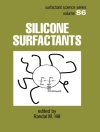Mercury cadmium telluride (MCT) is the third most well-regarded
semiconductor after silicon and gallium arsenide and is the
material of choice for use in infrared sensing and imaging. The
reason for this is that MCT can be ‘tuned’ to the
desired IR wavelength by varying the cadmium concentration.
Mercury Cadmium Telluride: Growth, Properties and
Applications provides both an introduction for newcomers, and a
comprehensive review of this fascinating material. Part One
discusses the history and current status of both bulk and epitaxial
growth techniques, Part Two is concerned with the wide range of
properties of MCT, and Part Three covers the various device types
that have been developed using MCT. Each chapter opens with some
historical background and theory before presenting current
research. Coverage includes:
* Bulk growth and properties of MCT and Cd Zn Te for MCT epitaxial
growth
* Liquid phase epitaxy (LPE) growth
* Metal-organic vapour phase epitaxy (MOVPE)
* Molecular beam epitaxy (MBE)
* Alternative substrates
* Mechanical, thermal and optical properties of MCT
* Defects, diffusion, doping and annealing
* Dry device processing
* Photoconductive and photovoltaic detectors
* Avalanche photodiode detectors
* Room-temperature IR detectors
关于作者
Dr. Peter Capper is a Materials Team Leader at BAE Systems Infrared Ltd., in Southampton, UK.
James Garland is the editor of Mercury Cadmium Telluride: Growth, Properties and Applications, published by Wiley.












